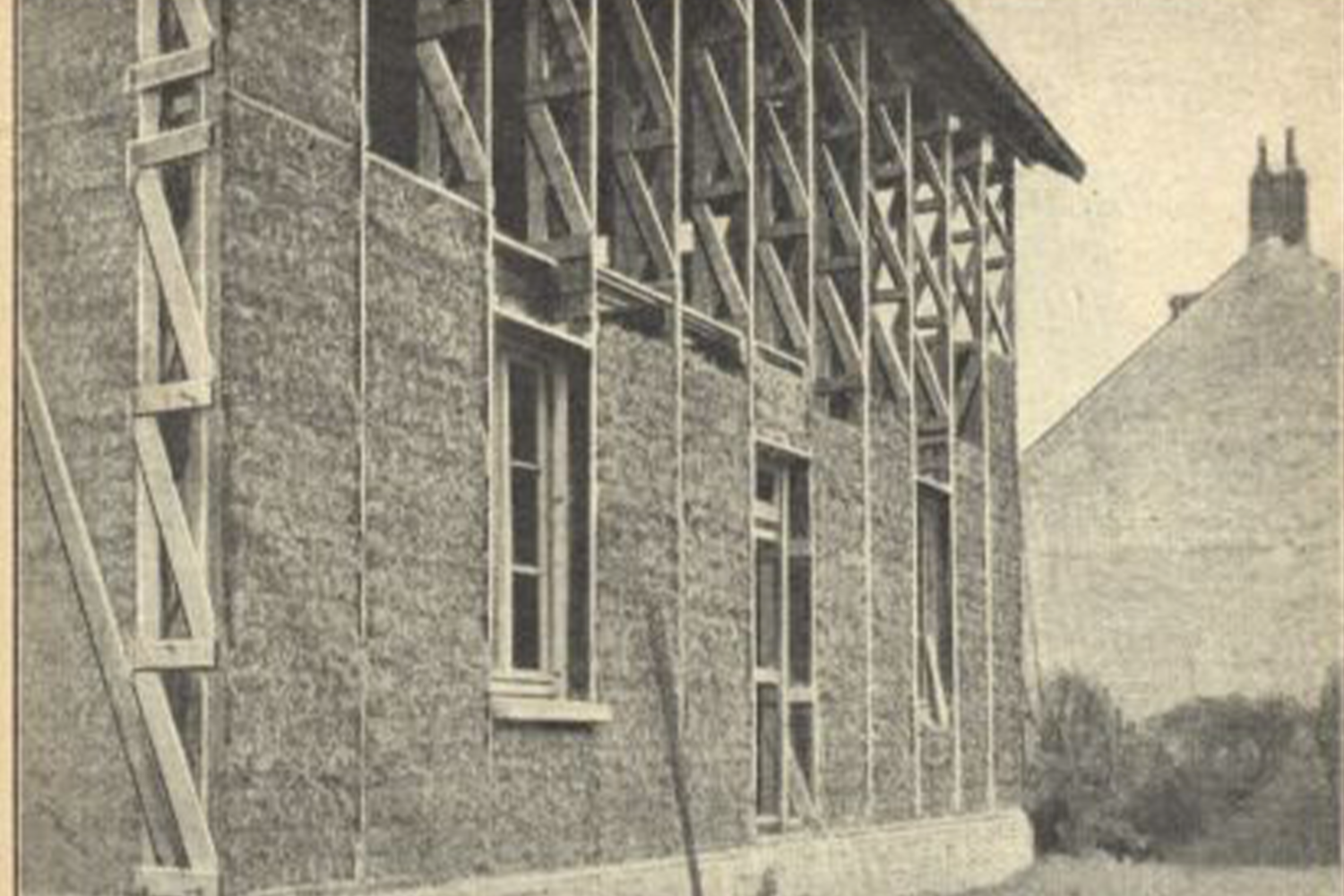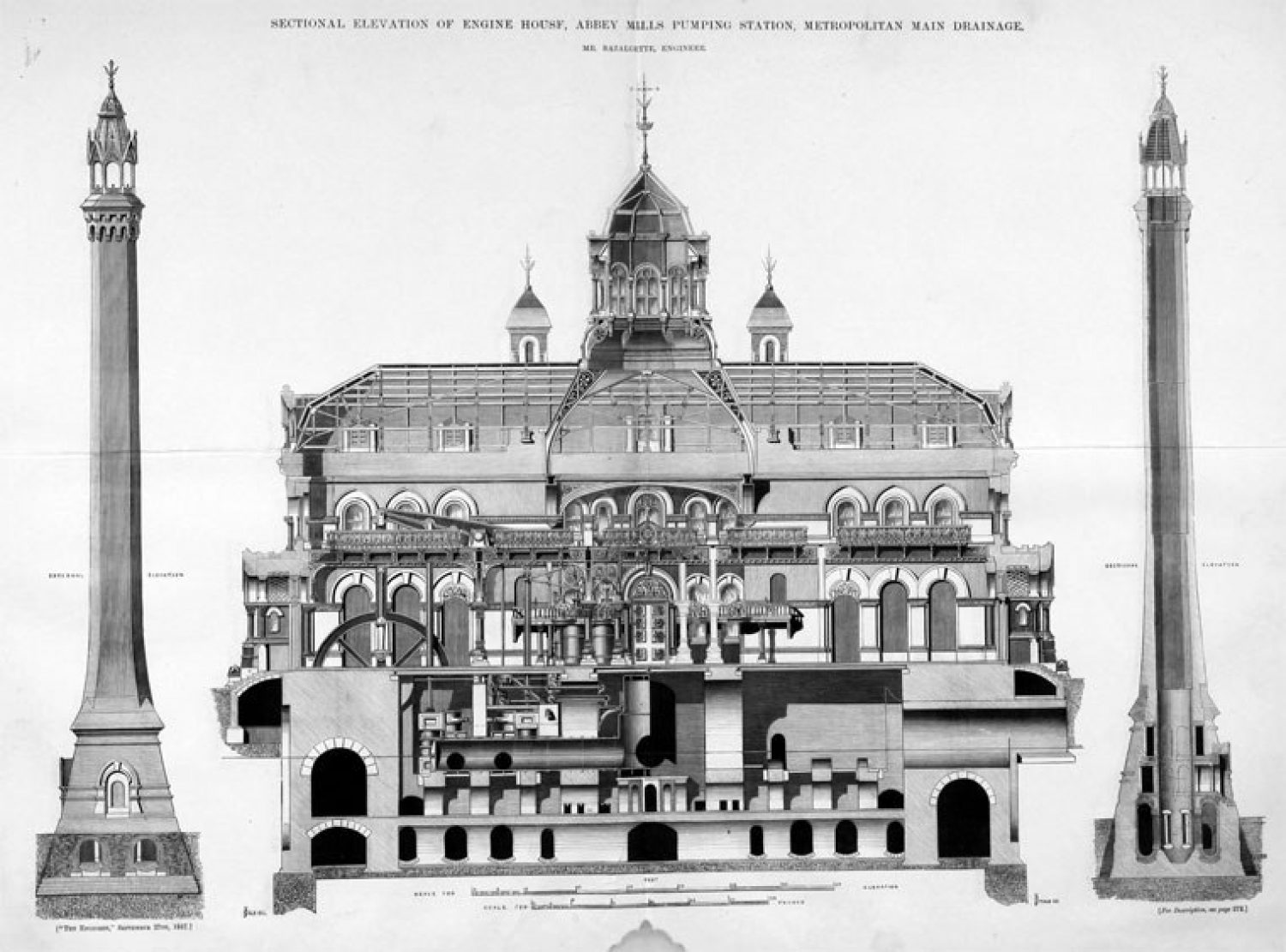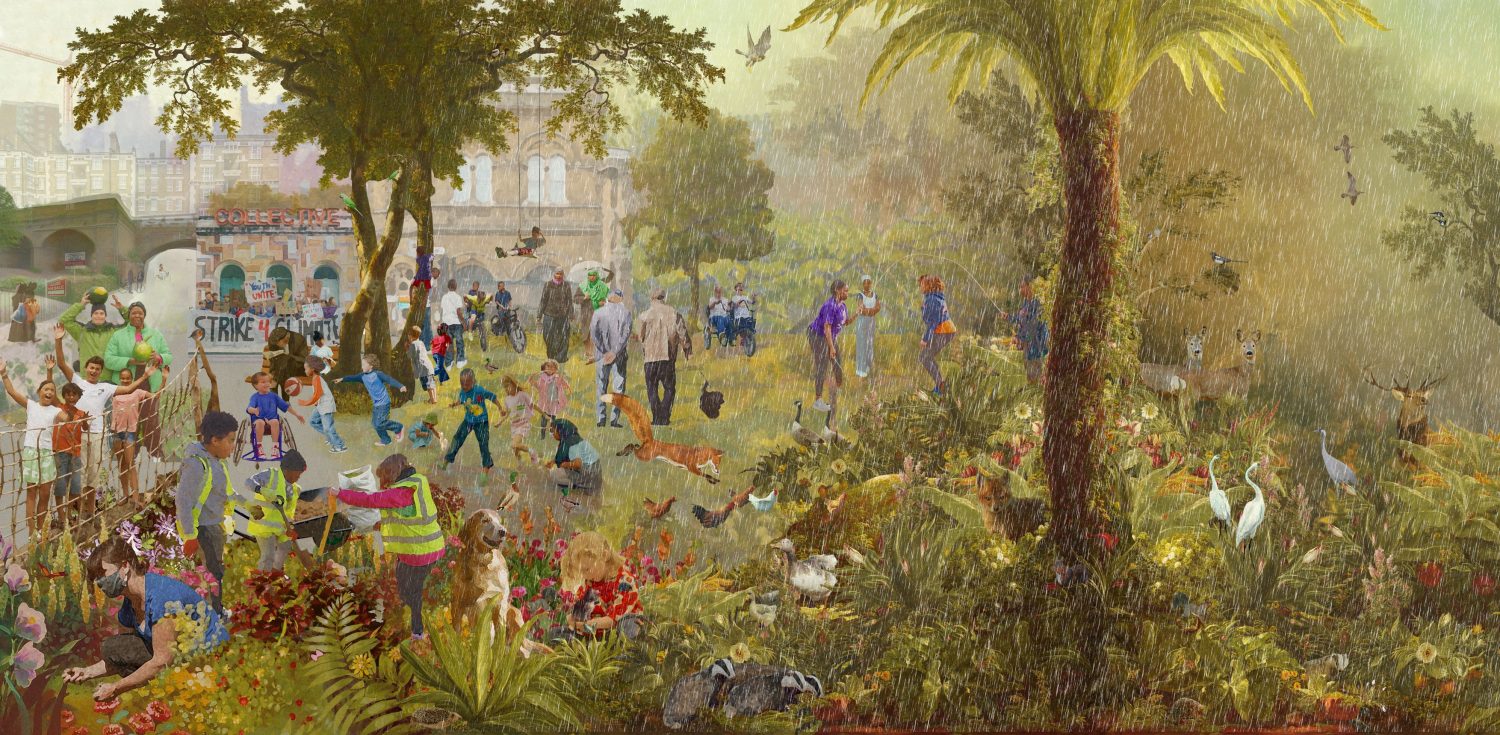Three rifts in the landscape of death
1. The rift between above-ground and below-ground
In early 19th Century Britain, there were two types of burial ground. The first functioned as efficient storage for dead bodies - space-planned and utilitarian, it crammed as many unmarked bodies into as tight a space as possible. With overpopulation in towns and cities, these grounds becoming increasingly packed - piled-up with bones and half-buried bodies, and constantly dug and re-dug, they released toxic gases of decomposition into the air and were frequently pillaged. They were not places for the living to dwell.
If you could afford it, the second type of burial was to be laid to rest in your own private picturesque grounds.
Although death figured greatly in Victorian arts, the first time cemetery design was addressed at length was in 1843 by J C Louden, the Victorian garden writer, designer and theorist. His seminal book 'On the laying out, planting and managing of cemeteries' brought together the messy, unknown underworld with the land of the living above the surface, and began to propose how the two could co-exist.
Louden presented a model that was health-focussed - addressing the dangers facing grave-diggers and effect on the environment; historic - aiding the cataloguing of the dead and commemoration of heritage; and spiritually rich - providing people space to grieve in nature and tranquillity. Thereafter came what became known as the Garden Cemetery Movement - the bringing together of life and death through landscape design.
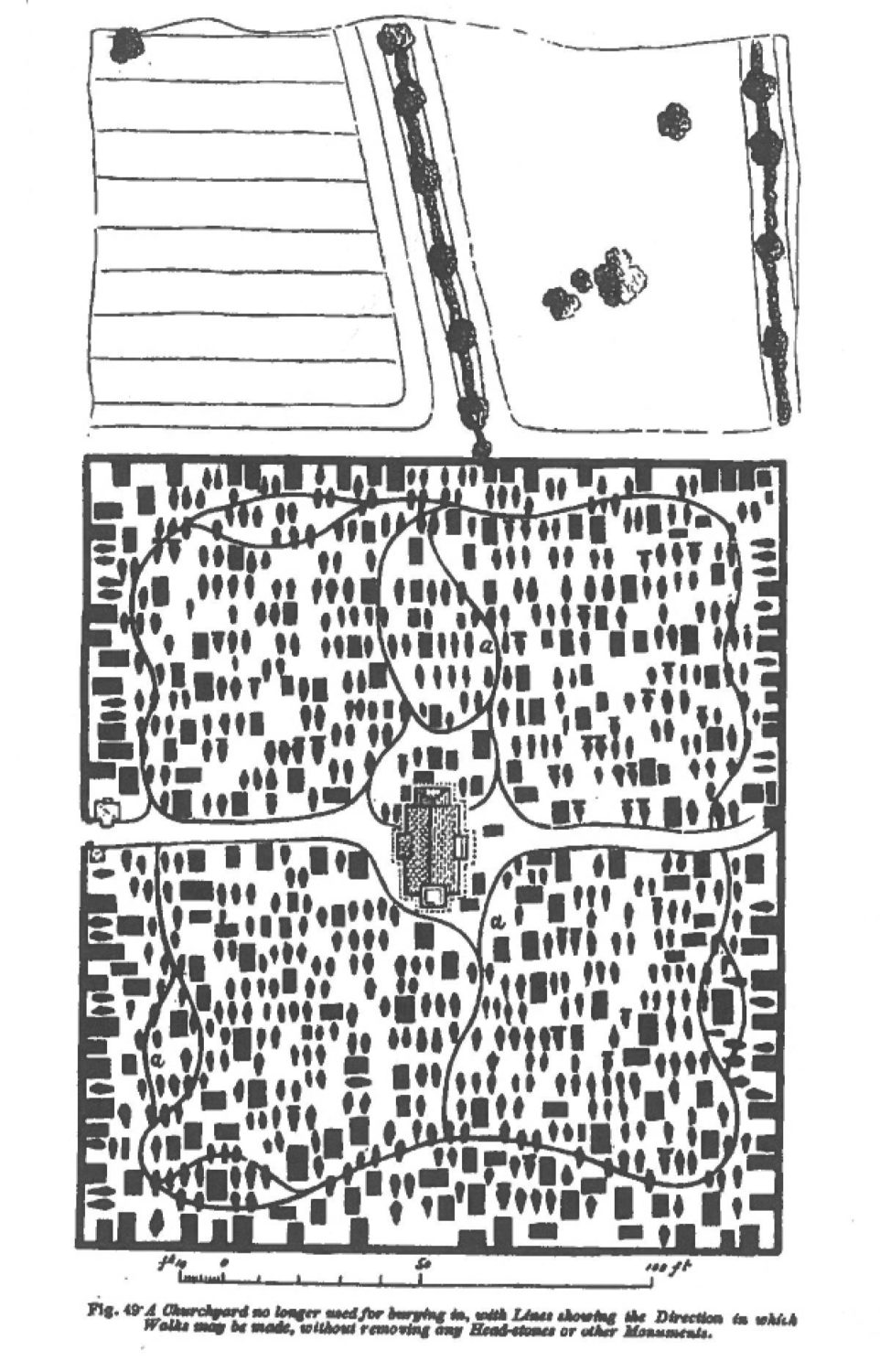
'A Churchyard no longer used for burying in, with Lines showing the Direction in which Walks may be made, without removing Head-stones or other Monuments' from 'On Laying out Cemeteries' by J C Louden (1843)
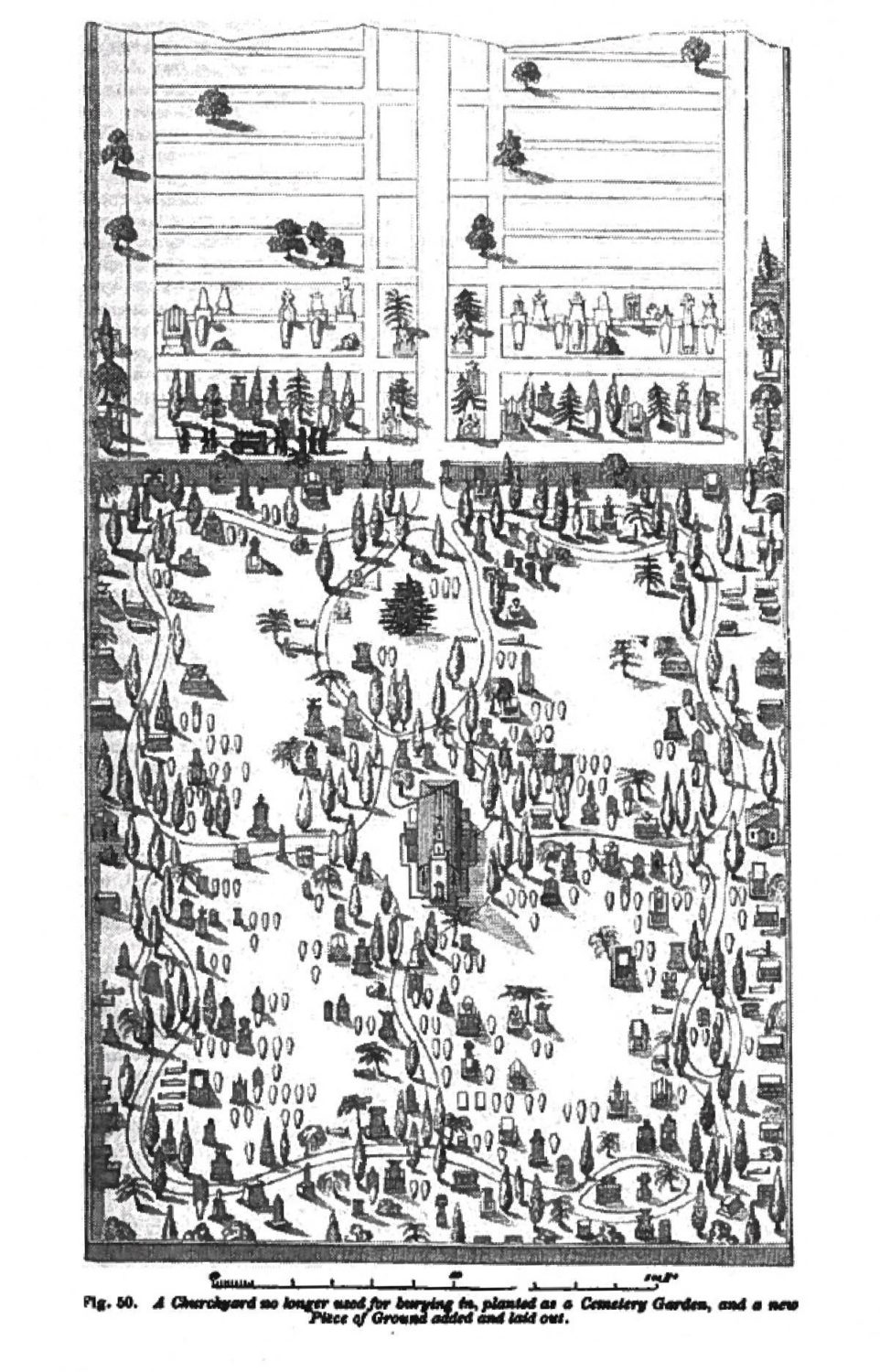
'A Churchyard no longer used for burying in, planted as a Cemetery Garden, and a new Piece of Ground added and laid out,' from 'On Laying out Cemeteries' by J C Louden (1843)
2. The rift of silence
There is a deep cultural trauma in the way that anglo-culture deals with death. Early Christian attitudes traditionally embraced open and individual expressions of grief, but after World War I this shifted towards a culture of private mourning. In the communal bereavement of an entire nation, the population swore a social silence to be able to carry on. The silence was accompanied by a practice of formalised, professionalised, often tightly defined procedural acts of burial and cremation. Acts that were publicly commemorative, but personally detached. This silence has permeated into today's societal difficulty with facing, discussing, and processing death. Graveyards and tombs are places of silence.
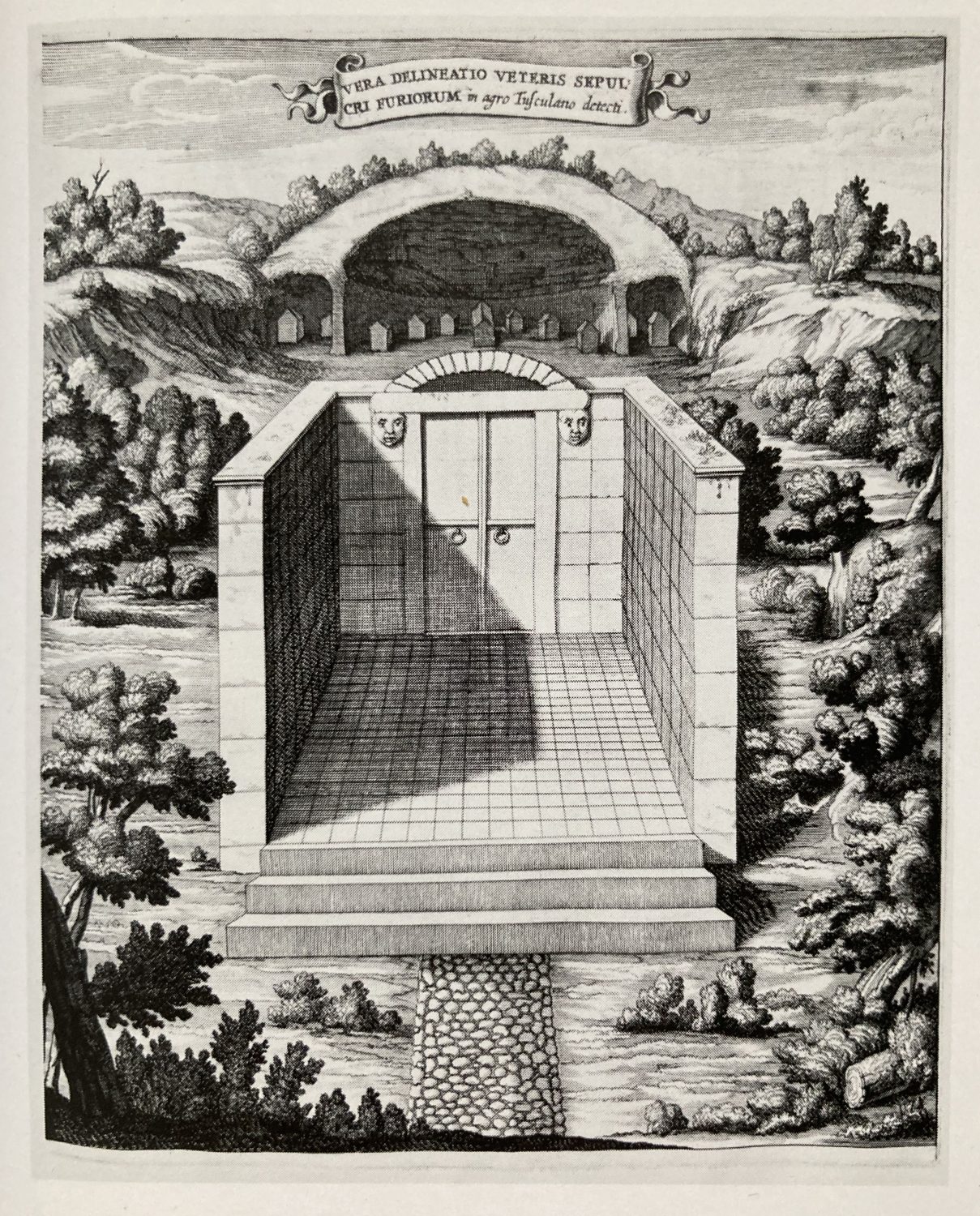
Tomb of Furii, a drawn reconstruction based on verbal reports of its discovery in 1665. From 'Athanasius Kircher's theatre of the world', Thames and Hudson Ltd 2015
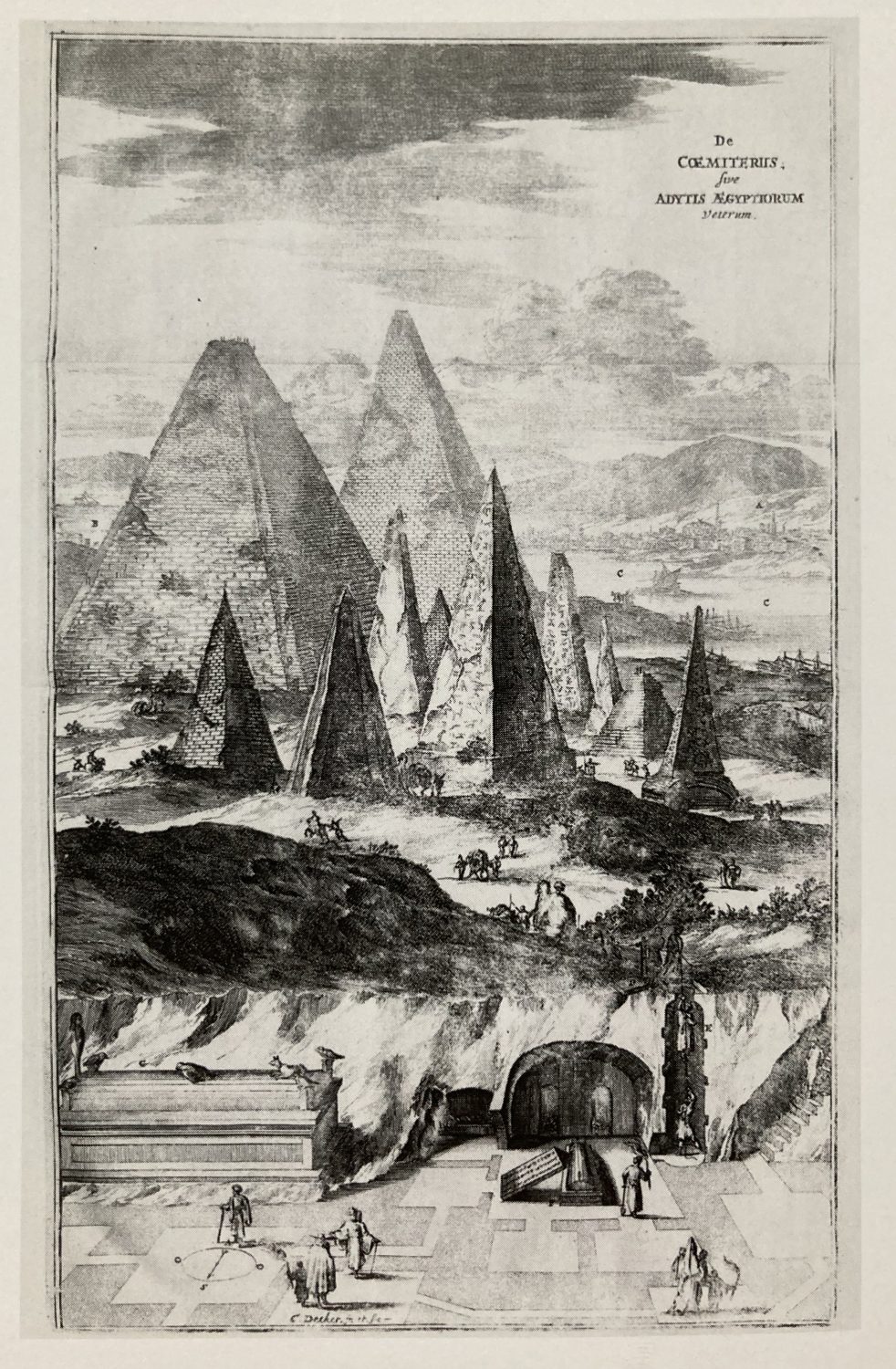
The pyramids of Giza, imagined by Athanasius Kircher based on traveller's reports. From 'Athanasius Kircher's theatre of the world', Thames and Hudson Ltd 2015
3. The rift between humans and non-humans
In the woods, death is the richest point of conversation. It is the meeting place of flora, fauna and fungi - a place of decomposition and growth, providing protection, food and carbon-storage, nourishment and rejuvenation to the earth. Standing deadwood houses and feeds thousands of invertebrates, saprophytic fungi recycles animal remains into fertile nitrogen-rich soils for new plant growth. Death provides a moment of concentrated life.
The human body is full of nutrients that can support whole ecosystems, and across the world exist a wealth of both age-old and contemporary methods of dealing with human bodies after death, and connecting them back into the natural environment. From environmentally reworking our cultural norms - such as decomposable coffins or eco-cremations - to more innovative methods- such being placed in a reef ball in the North Atlantic, 'human composting' into two wheelbarrows of soil, or frozen and ultra-sonically vibrated into a fine dust - widespread environmental awareness is opening up opportunites to close the rift between our bodies and spirits and the natural world.
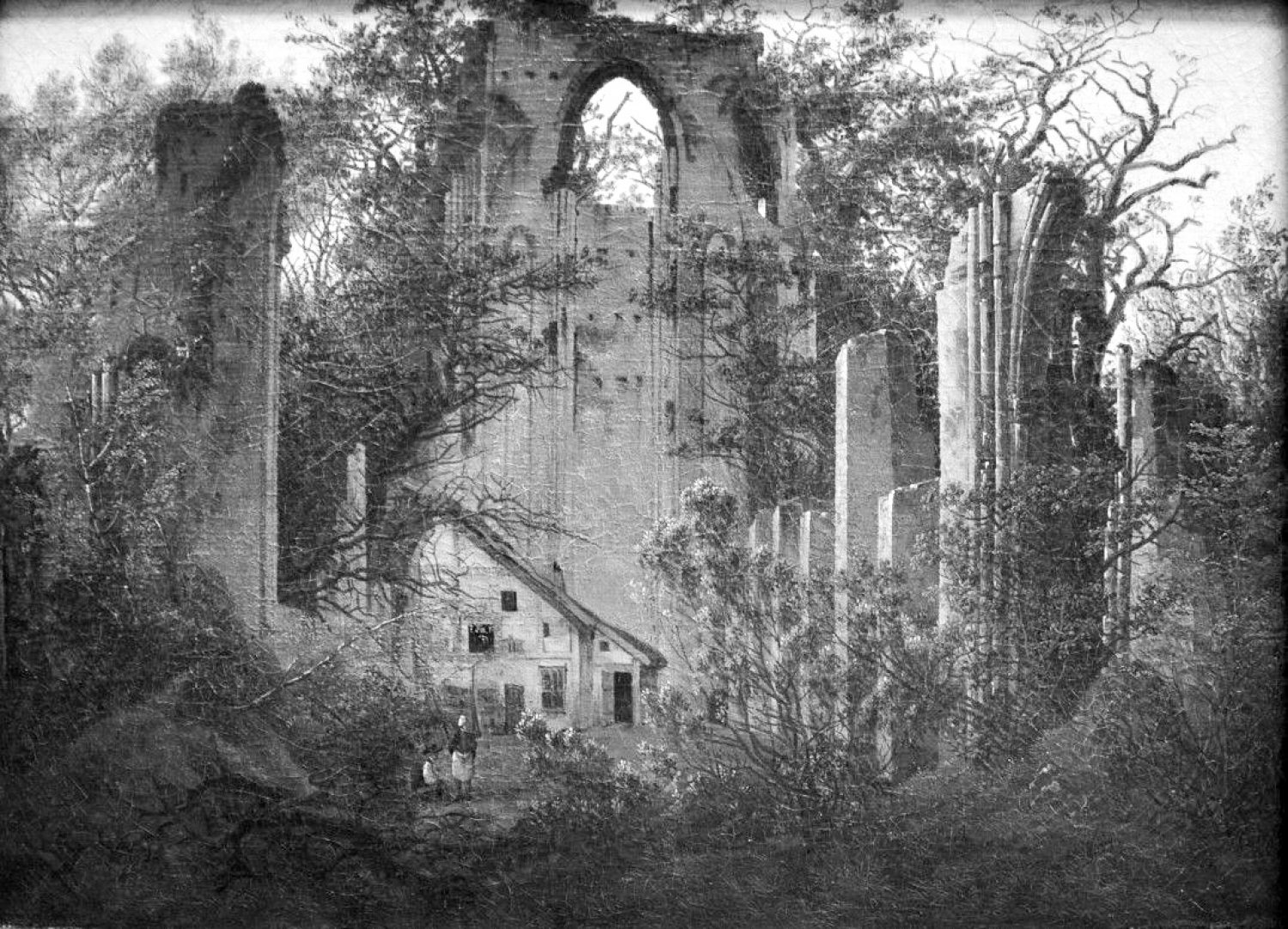
Ruins of Eldena Monastery near Greifswald, Caspar David Friedrich (1824-25)
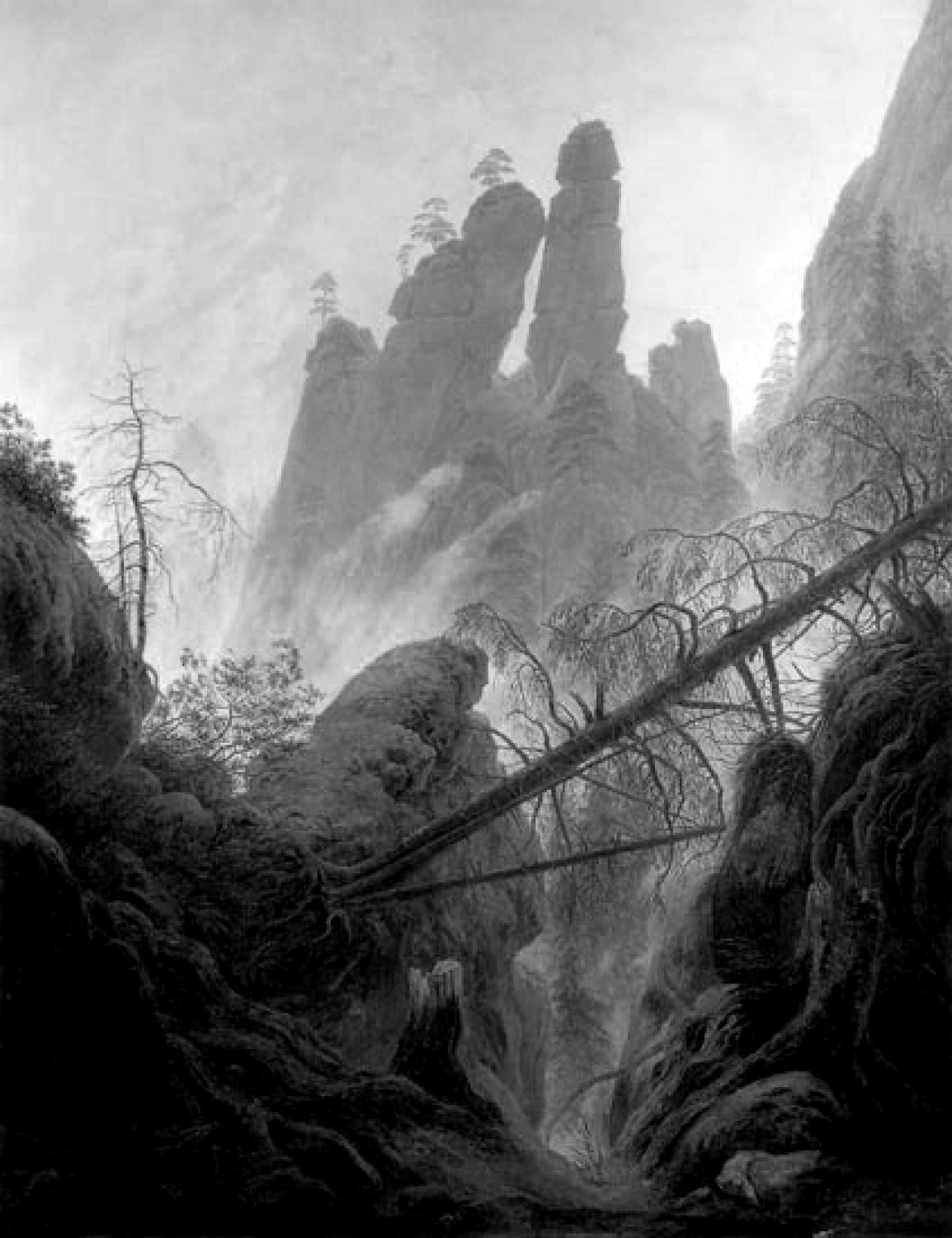
Rocky Ravine, Caspar David Friedrich (1822-23)
